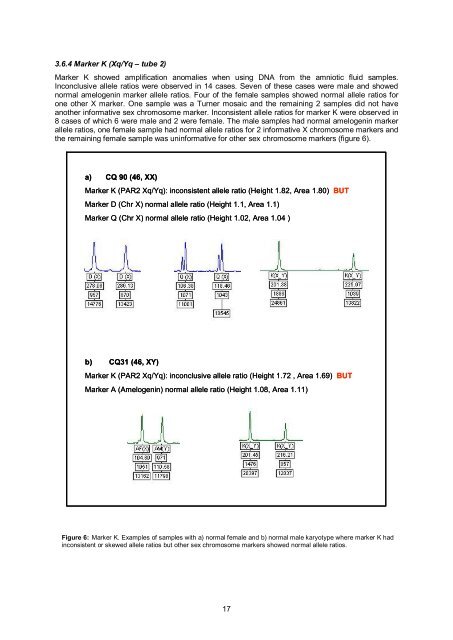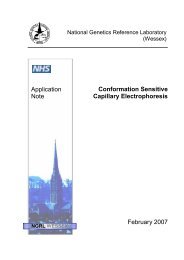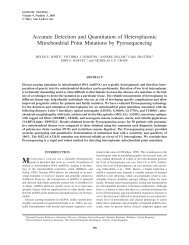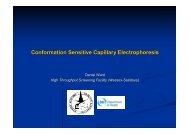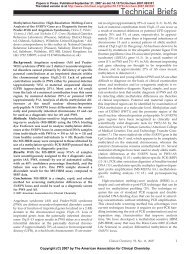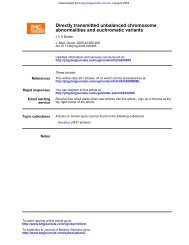(Wessex) Technology Assessment ChromoQuant⢠(version 1)
(Wessex) Technology Assessment ChromoQuant⢠(version 1)
(Wessex) Technology Assessment ChromoQuant⢠(version 1)
You also want an ePaper? Increase the reach of your titles
YUMPU automatically turns print PDFs into web optimized ePapers that Google loves.
3.6.4 Marker K (Xq/Yq – tube 2)Marker K showed amplification anomalies when using DNA from the amniotic fluid samples.Inconclusive allele ratios were observed in 14 cases. Seven of these cases were male and showednormal amelogenin marker allele ratios. Four of the female samples showed normal allele ratios forone other X marker. One sample was a Turner mosaic and the remaining 2 samples did not haveanother informative sex chromosome marker. Inconsistent allele ratios for marker K were observed in8 cases of which 6 were male and 2 were female. The male samples had normal amelogenin markerallele ratios, one female sample had normal allele ratios for 2 informative X chromosome markers andthe remaining female sample was uninformative for other sex chromosome markers (figure 6).a) CQ 90 (46, XX)Marker K (PAR2 Xq/Yq): inconsistent allele ratio (Height 1.82, Area 1.80) BUTMarker D (Chr X) normal allele ratio (Height 1.1, Area 1.1)Marker Q (Chr X) normal allele ratio (Height 1.02, Area 1.04 )b) CQ31 (46, XY)Marker K (PAR2 Xq/Yq): inconclusive allele ratio (Height 1.72 , Area 1.69) BUTMarker A (Amelogenin) normal allele ratio (Height 1.08, Area 1.11)Figure 6: Marker K. Examples of samples with a) normal female and b) normal male karyotype where marker K hadinconsistent or skewed allele ratios but other sex chromosome markers showed normal allele ratios.17


